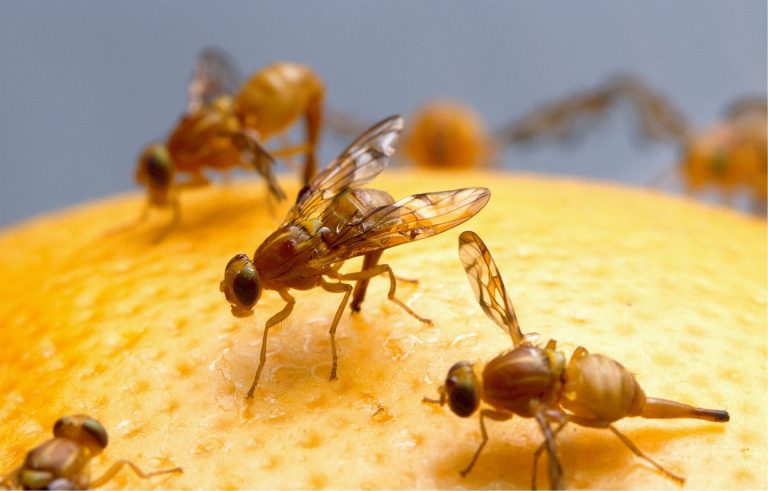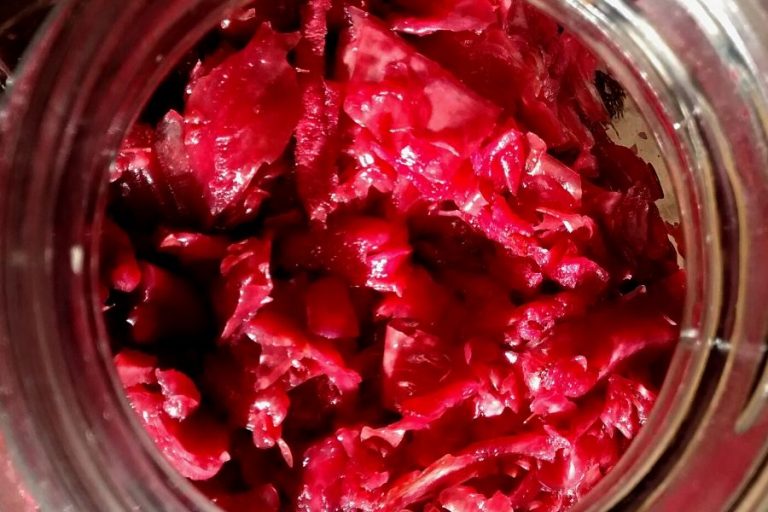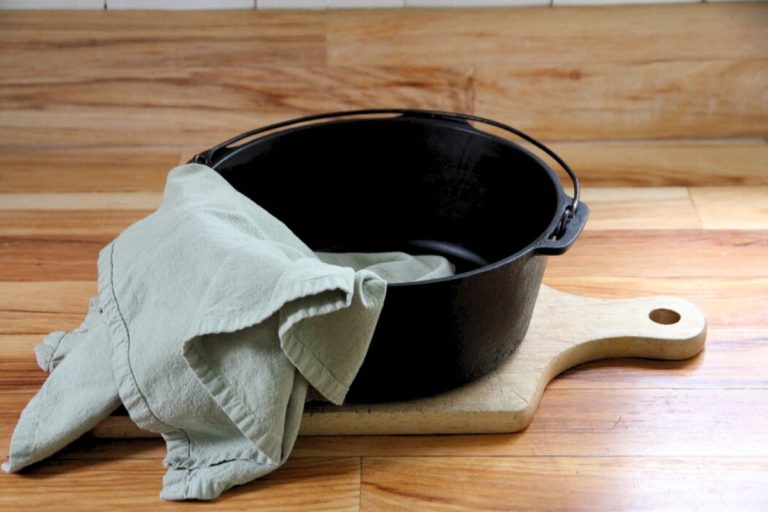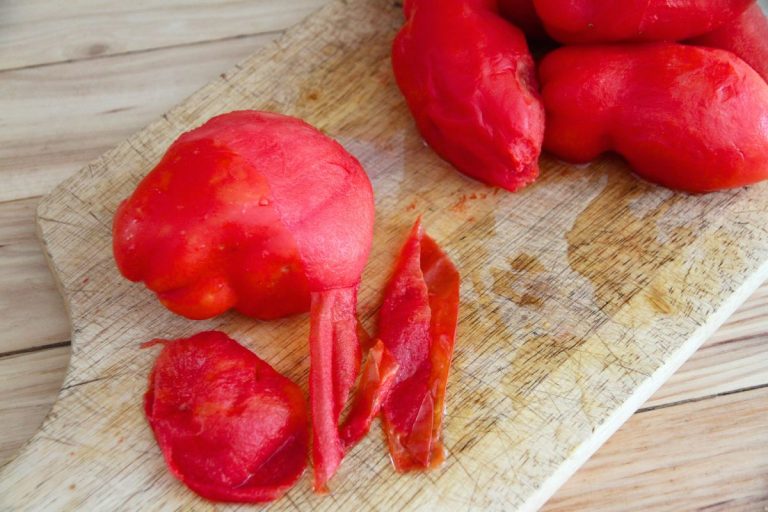How to Make Traditional Homemade Head Cheese
Learn how to make traditional homemade head cheese using a whole pork head. This old fashioned recipe creates a delicious meat topping that pairs well with homemade bread and (real) cheese.

I first learned about head cheese when I was little girl. My mum was reading aloud from the book Farmer Boy, by Laura Ingalls Wilder. It told of how the Wilder family used all parts of their hogs on butchering day, how they made head cheese with meat and broth from the pig's heads.
And I always understood head cheese isn't the dairy product we think of today. It was more like a natural jelly with chunks of meat suspended throughout.
Hog head cheese recipes go way back in time, to centuries of the past when folks couldn't afford to waste anything and nearly all pig parts had a place and purpose in the kitchen.
In those days, pig feet were pickled, intestines were cleaned, scraped and used as sausage casings or chitlins, heart was cooked and liver was saved for sausage (as was blood in some cultures..but we don't need to go there!). Belly was for dry cured bacon and ham hocks were hung and smoked in an old fashioned smoke house.
Folks used all parts of the hog because in those days, nothing could be wasted.
You probably won't find traditional homemade head cheese at your local grocery store or butcher shop.
Fact is, if you want a good head cheese, you have to make it yourself.
Ever since I was a little girl, I've wanted to try making homemade head cheese.
And when we butchered two, 5 month old female hogs this fall, I knew it was now or never. After cleaning the pig heads, we tried making hog head cheese, both on the stove top and in the oven.
The stove top method (which is also the tried and true way) worked beautifully.
But the oven method? Not so much! Here's why.
Should You Make Head Cheese in the Oven or a Stock Pot?
Here are the reason we didn't like making hog head cheese in the oven!
- It's hard to find a roaster big enough for a pig's head (they're huge!).
- A pig head is very thick and it was impossible for us to get the roaster's lid on.
- We had to cut the pig's ears off to get it in the oven (seriously, the size was shocking).
- Our oven rack had to go on the lowest slot so we could fit the head in.
- It was impossible to keep from overcooking the meat without a lid and lots of it dried out and turned dark brown.
- Because the meat overcooked, the broth itself tasted overdone and didn't taste good.
Needless to say, I learned that the best way to make traditional homemade head cheese is to boil it in a large pot, just like folks have been doing for hundreds of years prior to my brains and existence.
In this case, the old fashioned way is the very best way.
Tools You'll Need
- 20+ quart pot with a lid (I use this exact one HERE that is also a water bath canner)
- strong meat forks
- large baking dish for holding cooked pig head
- a wire mesh strainer
- large bowl
- two 9x5 bread pans (or molds of choice)
Let me just reiterate that before you try making head cheese, you must get a big, gigantic stock pot. A pig's head is huge. It won't fit in your regular soup pot. I have the one I recommend above. It's 20+ quarts and our pig's head barely fit in that.
Go big. Or no head cheese.

Ingredient List
- 1 fresh or frozen head of a pig
- water
- bay leaves
- large onion or 5-6 fresh leeks
- garlic cloves
- salt
- black pepper
- a glug of apple cider vinegar (optional)
Some folks think vinegar helps break down the gelatin around the bones of your animal, but I've never noticed a difference with or without. When I cook bones for broth (or in the case a pig's head) for more than a few hours, I usually skip the apple cider vinegar.
But that's just me. Do whatever suits you best.
How to Clean a Pig Head for Cooking
On butchering day, be sure to set pig head/s aside as soon as they're cut off, so they don't accidentally get tossed.
Note: if you're hiring a butcher, be sure to specify that you want to keep the head/s.
For this traditional recipe, I recommend leaving the cheek meat intact. Unless you have some other specific use for them, that is.
Be sure to clean the pig's head just after it's been detached from the animal. I'm not a pro but I have cooked enough animal heads (like sheep and such) to understand the importance of cleaning them well!
Use a hose to spray water into the pig's mouth and wash away any bits of food that are likely still present. Pig ears are usually quite dirty too, so be sure to spray them inside as well. And then?
Stand back, turn your hose to a high pressure stream and blast your pig head/s all over with clean water. You can even scrub the bristly skin with a stiff brush, if you like.
After rinsing them, continue with the butchering process until everything was done. This gives pig heads time to dry. And then?
It's a good idea to take a torch and burn off all the long hairs, until you have a relatively smooth skin.
After a quick 2nd rinse, heads are ready for processing or freezing.
If you decide to process the heads later, you can leave them in the freezer until you're ready to learn how to make traditional homemade head cheese.
How to Make Traditional Homemade Head Cheese
To make homemade head cheese, you need your largest pot (at least 20 quart), a pig head and enough water to cover nearly everything.
If your pig's head is frozen, let it thaw before cooking. And if it's fresh? Plop your pig's head into your pot, cut side down and snout up. You might not be able to cover the tip of the snout and in this case, just add cold water until it comes within 2 inches of the pot's rim.

Set the pot of water on your stove top and turn the burner to high heat. Bring to a full boil, then reduce the heat until you have a low boil (about point 2 on my stove top dial).
Leave the pig head to simmer for 12 hours. I let mine go all day, all night and even into the next day.
Helpful note: not comfortable running a kitchen burner overnight? As long as the meat is cooked throughout, you can stop partway through and let things cool. Continue the cooking process in the morning, giving the head about 12 hours of cook time in total.
When the meat is falling off the bone, remove from heat let things cool until you can safely handle things without getting burnt.
Use a pair of strong meat forks or even clean hands to lift the pig head. Set it in a large baking dish and remove cheeks, tongue and any other cooked bits of meat you find.
Place meat on a cutting board and chop or shred it down to bite-size chunks. Refrigerate until ready to use.

Send the cooking liquid through a strainer to catch small pieces of meat, gristle and jelly blobs of fat.
Give the pot a quick rinse and return the strained liquid to it. Add any herbs or spices you want for flavouring the broth.
To make a broth with high gelatin, cook the liquid down until there's 2 inches or so left in the pot. Strain it again and set aside to cool.
If you want green onions, leeks, cloves of garlic or anything else in your actual head cheese, saute these separately in pork fat until soft.
Spread the sauteed additions and head meat in your mold. I used 9x5 glass bread pans, but whatever you have on hand will do nicely.
Put an even amount of meat in each mold and pour the warm gelatin liquid over everything.
Place molds in the refrigerator and chill overnight.
To serve the finished product, cut it in thick slices and serve chilled on a piece of crusty, homemade bread. Think of it like a cold cut of meat.
Don't let it sit at room temperature for very long, or it may soften and start to drip.
Use head cheese in a week's time, or lift it from its mold, wrap well and freeze for later use.

Tips for Making Delicious Hog's Head Cheese
Always make head cheese in a stock pot
I tried to save time by cooking a second pig head in the oven. It was a bad idea because the lid wouldn't fit on the roaster with a giant pig's head inside, so the meat dried out and overcooked. Because of that, the broth tasted bad and the whole thing was a failure.
Boil it. For always.
Boil the liquor down, down and down
To make head cheese that holds together, you have to cook the broth down into a concentrate, so the gelatin content is high enough to hold bits of meat together at room temperature.
This is something I should have watched more closely. I didn't cook my broth down enough and as a result, the structure of my delicious head cheese was very soft and melty.
Wait until the very end to add salt
It's easy to add too much salt to your head cheese liquor. Because you cook the broth down into a concentrate, it will also concentrate salt content.
So I recommend avoiding all salt until you've cooked the broth down and are ready to pour it into meat filled loaf pans. Then you can adjust it to taste and know exactly what you're getting.

Traditional Hog's Head Cheese Recipe
Equipment
- 20 quart stock pot with lid
- 2 large meat forks
- 1 large pan for cooked head
- a strainer
- large bowl
- 2 9x5 bread pans
Ingredients
- 1 hog's head
- 4-5 bay leaves
- salt to taste
- black pepper to taste
- optional: garlic onion or leeks
Instructions
- Place clean hog's head in pot, cut side down and snout up.
- Add water until the pig's head is covered or until water comes within 2 inches of pot's rim.
- Cover pot with a lid.
- Set pot under high heat on stove until it boils, then reduce to a simmer.
- Simmer the pig's head for 12 hours or until meat falls off the bones.
- Let cool until you can safely handle the head and broth.
- Lift the pig head out and place on a baking pan.
- Remove meat from cheeks, tongue and head.
- Roughly chop or shred, then refrigerate meat until ready to use.
- Pour the broth through a strainer to catch unwanted bits.
- Rinse the pot and pour broth back in.
- Also add bay leaf, onions, garlic, leeks or anything else you want to flavor the liquor with.
- Boil the broth until there's 2 inches or less of liquid in the pot.
- Add salt, erroring on the side of slightly over salting.
- Let broth cool until you can safely handle and strain it once again.
- If adding to your head cheese, cook onions, garlic or leeks in lard until soft.
- Layer sauteed alliums in bread pans with meat.
- Generously pour the salted liquor over the meat.
- Place bread pans in the fridge overnight for 8-10 hours or until set.
- Cut into pieces and serve cold with slices of crusty, homemade bread.
- To preserve: refrigerate up to 1 week, or wrap well and freeze for later use.






Here's a serving suggestion. Instead of using cheese, use a slice of hogs head cheese to make a grilled cheese.
I have used my pressure canner to cook a whole hog head, do you think that is okay
I think that's a great idea, so long as your canner isn't made of aluminum. Pressure cooking is a great way to quickly cook meat and make bone broth. You would need to cook the broth down after if you're making headcheese.